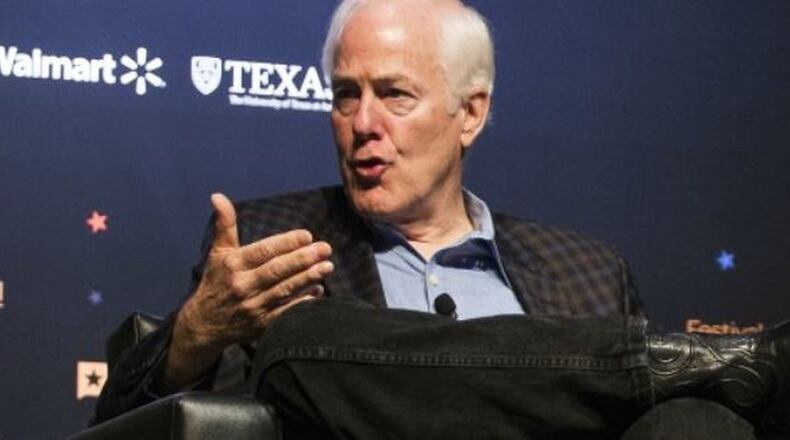Sen. John Cornyn of Texas told a Texas constituent that insurance premiums have increased by more than 105 percent since 2013, under the Affordable Care Act, or Obamacare.
This claim, we found, stems from a reputable report, though the percentage cited by Cornyn merits explanatory clarifications.
Cornyn spokesman Drew Brandewie traced the 105 percent figure to a five-page May 2017 report from the U.S. Department of Health and Human Services stating that average premiums charged in 2017 for health insurance policies sold to individuals shopping for coverage on the online federal exchange, Healthcare.gov, were 105 percent higher “than average individual market premiums in 2013.”
The report further says: “The median state percent increase was 108%. The results are similar with those published by online health insurance broker eHealth, which found a 99% increase in premiums for plans purchased on their portal between 2013 and 2017.”
Nationally, the HHS report says, average “monthly premiums increased from $232 in 2013 to $476 in 2017 and 62% of those states had 2017 exchange premiums at least double the 2013 average.” The change varied by state from a low of 12 percent (New Jersey) to a high of 222 percent (Alabama).
Experts we reached agreed premiums in 2017 were up quite a bit from 2013. They also noted factors to take into consideration.
The HHS report Cornyn cited offers clarifications itself, including:
• A reminder that the Obamacare law imposed coverage expectations not fully in place until 2014.
• “This analysis,” the report says, “does not account for the fact that the overall populations enrolling in the individual market in 2017 are different from those enrolling in 2013. Older and less healthy people are a larger share of the individual market risk pool now than in 2013. The changing mix of enrollees and adverse selection pressure has likely been a significant cause of the large average premium increases in the individual market over this four-year period.”
• The research didn’t consider premium changes in states including California and New York that set up their own online exchanges.
• The report did not check premium changes on individual policies purchased privately, not through exchanges. In 2016, the report says, an HHS office estimated that the non-exchange individual market equaled 38 percent of total individual market enrollment.
Experts conceded that under the Obamacare law, tax credits have eased what 80-plus percent of purchasers on the exchanges pay for coverage. That doesn’t make the premium increases less real. Taxpayers pick up the costs of tax credits.
Timothy Callaghan, a Texas A&M University expert on health policy, said a driver behind the difference in premiums is that insurance companies initially “incorrectly priced their plans during the first year of exchange operations” by expecting many more younger healthier adults to sign up in contrast to older individuals more likely to be ill—and then they had to adjust.” Callaghan further suggested by email that “at least some of the increase in premiums in the past year has been caused by the actions of the Trump administration and Republicans in Congress and their efforts to repeal and replace the ACA and undermine it bureaucratically.”
Our ruling
Cornyn’s claim traces to an admittedly incomplete federal analysis of changes in 39 states that didn’t research premium changes in 11 states that run their own insurance exchanges. It’s also worth clarifying that Obamacare policies must cover pre-existing conditions without penalty and generally provide more benefits than were required in most states in 2013—surely factors figuring into increased premiums.
We rate this claim Mostly True.
Under the Obamacare law, health insurance “premiums have increased by more than 105 percent since” 2013.
— John Cornyn on Friday, September 22nd, 2017 in a letter to a constituent
About the Author
The Latest
Featured


